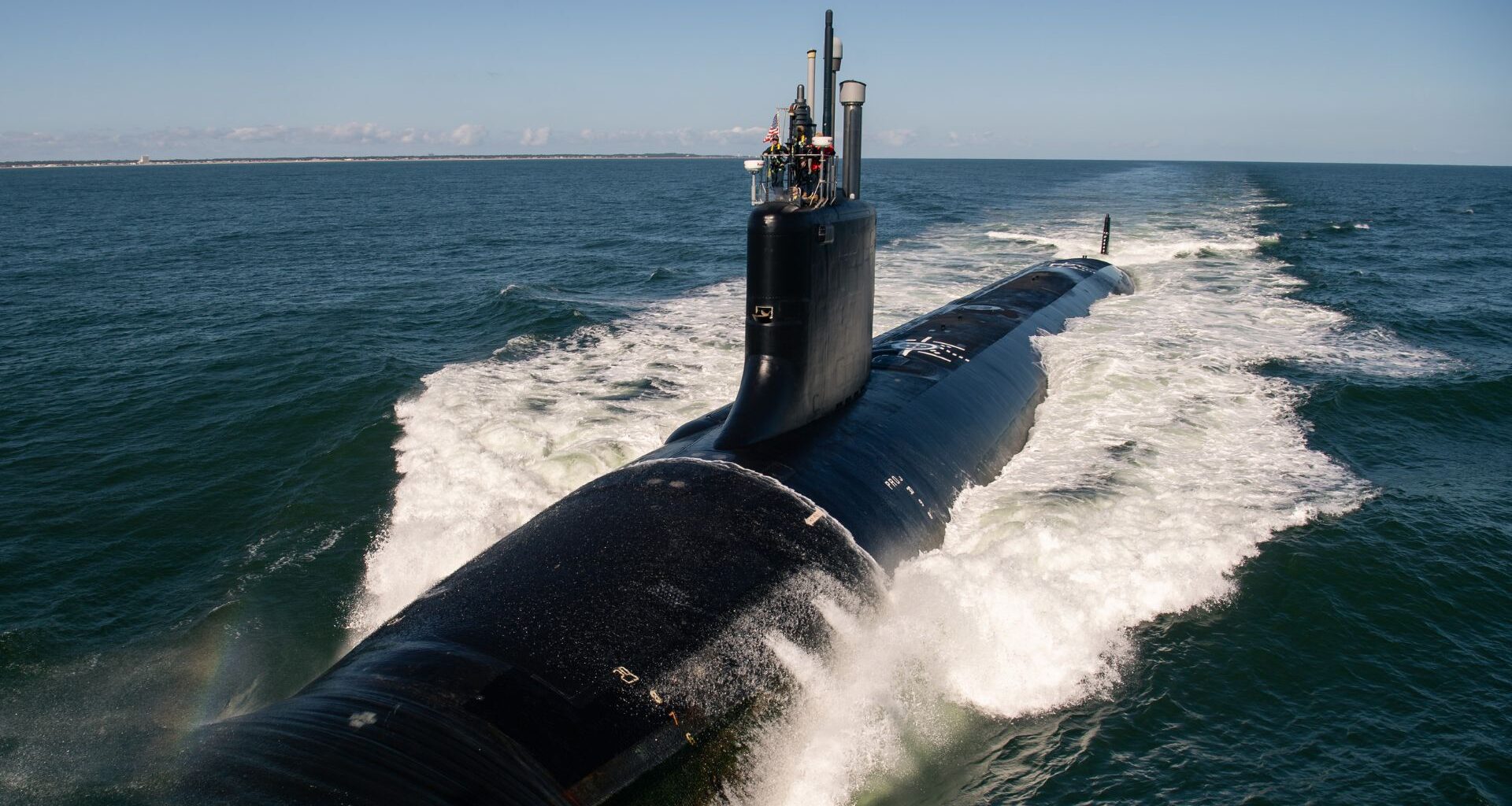Huntington Ingalls Industries (HII) said Tuesday that its Newport News Shipbuilding division has completed initial sea trials for the Virginia-class attack submarine Massachusetts (SSN 798), marking a major milestone before delivery to the US Navy.
Over several days at sea, crews from Newport News Shipbuilding and the Navy conducted a series of tests, including the submarine’s first submergence and high-speed maneuvers on the surface and underwater, the company said.
Additional testing and evaluations will continue before Massachusetts is formally handed over to the Navy.
“Our entire team at Newport News Shipbuilding understands the importance of delivering capability to our fleet,” said Kari Wilkinson, president of Newport News Shipbuilding.
“Proving capabilities through this first sea trial for Massachusetts is an important step in demonstrating this, and we are honored to support the mission.”
Massachusetts is the 25th Virginia-class submarine and the 12th built by Newport News Shipbuilding, one of only two shipyards in the US capable of constructing nuclear-powered submarines.
The vessel was christened in May 2023 and will soon join the Navy’s fast-attack fleet.
Advanced attack submarine
Virginia-class submarines are built to be versatile in modern naval combat.
They can perform various missions, including anti-submarine and anti-surface warfare, launching Tomahawk missile strikes, gathering intelligence, conducting mine warfare, and deploying Special Operations Forces (SOF).
Each submarine integrates cutting-edge stealth, mobility, and endurance through nuclear propulsion, a key advantage over conventional submarines.
The Virginia class replaces the aging Los Angeles-class (SSN 688) submarines that have formed the backbone of the US fleet for more than 40 years. To date, 23 Virginia-class submarines have been commissioned.
Built jointly by HII’s Newport News Shipbuilding and General Dynamics Electric Boat, the Virginia class employs modular construction and open-architecture systems for faster modernization and integration of emerging technologies.
Since introducing the Block III variant, the Virginia class has featured a redesigned bow section with a Large Aperture Bow (LAB) sonar array, enhancing detection capabilities and reducing life-cycle costs.
It also replaced the 12 Vertical Launch System (VLS) tubes with two large Virginia Payload Tubes (VPTs), each capable of launching six Tomahawk cruise missiles.
The Block V variant introduces the Virginia Payload Module (VPM), a new mid-body hull section containing four large payload tubes.
Each tube can carry seven Tomahawk missiles, increasing total missile capacity by 28. The VPM also supports new payloads, including unmanned underwater vehicles (UUVs) and special operations equipment.
Future Block VI and VII submarines will continue integrating advanced sensors, computing systems, and payload flexibility for multi-domain operations.
General characteristics
The Virginia-class submarines are built jointly by General Dynamics Electric Boat and HII’s Newport News Shipbuilding, the only two US shipyards capable of constructing nuclear-powered submarines.
The USS Virginia (SSN 774) is the first ship in its class. It was commissioned on October 3, 2004. This began a new generation of fast-attack submarines designed for versatility, endurance, and stealth.
Each submarine is powered by a nuclear reactor driving a single shaft, giving it virtually unlimited range and the ability to remain submerged for extended periods without surfacing.
The Virginia class measures about 377 feet (114.8 meters) in length, with newer variants featuring the Virginia Payload Module (VPM) extending the hull to 461 feet (140.5 meters).
The beam measures 34 feet (10.36 meters), and displacement is approximately 7,800 tons when submerged, increasing to 10,200 tons with the VPM installed.
These submarines are surprisingly quick. They can travel more than 25 knots, about 46 kilometers per hour, underwater.
A Virginia-class submarine has a crew of 145 people, including 17 officers and 128 sailors. The crew is trained for various missions. They gather intelligence, conduct strikes, engage in undersea warfare, and perform special operations.
Designed with a modular architecture and commercial off-the-shelf components, the Virginia class can be rapidly upgraded with new systems and sensors throughout its service life.
The combination of stealth, endurance, and payload capacity ensures that these submarines remain at the forefront of US naval power projection and undersea warfare for decades.
With the completion of its first sea trials, Massachusetts moved one step closer to joining the fleet, reinforcing the Navy’s strategic advantage and undersea dominance well into the 21st century.
